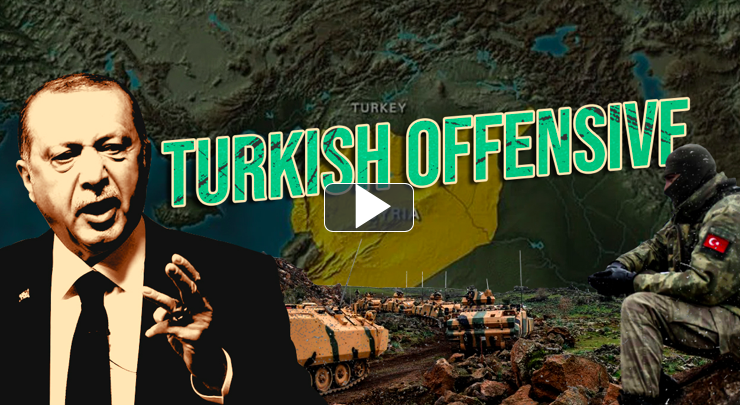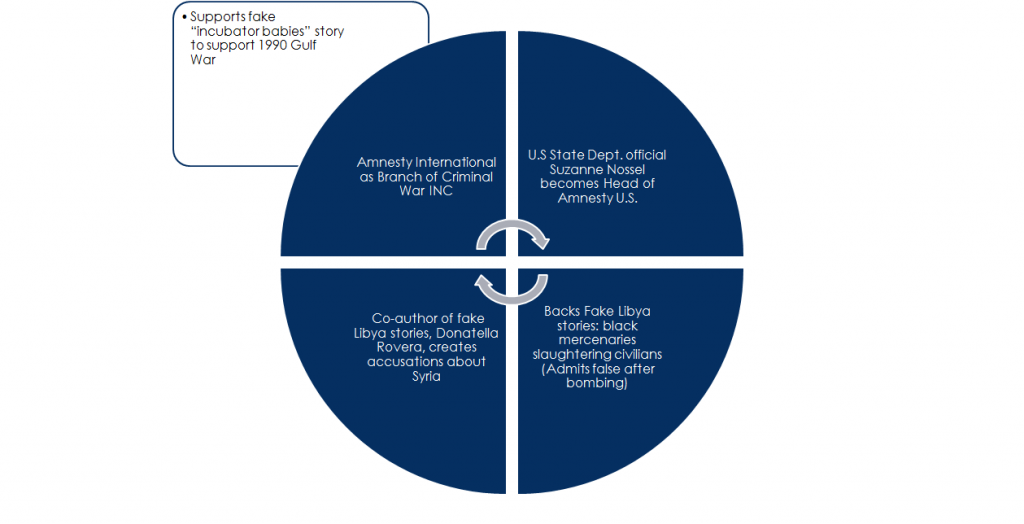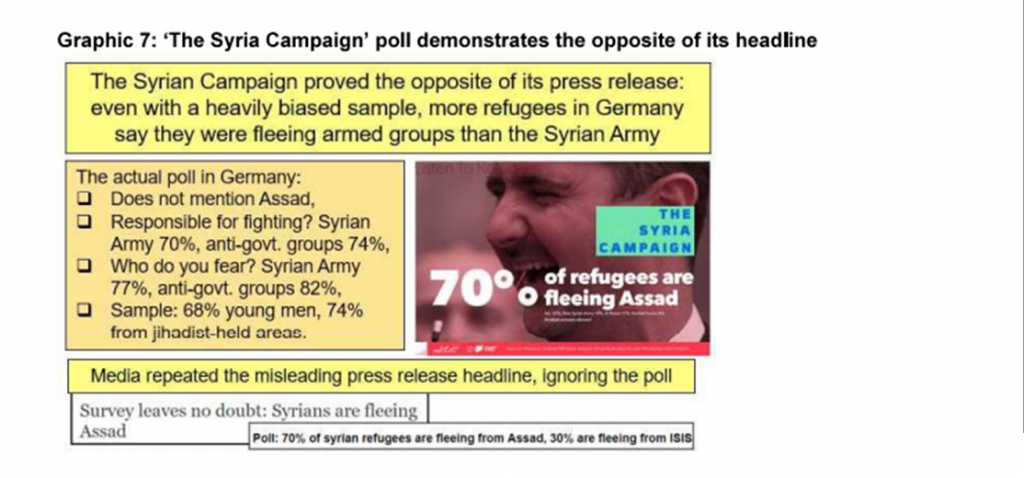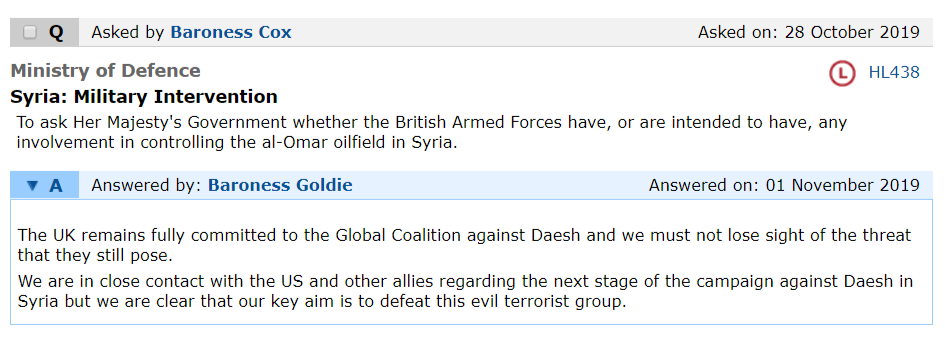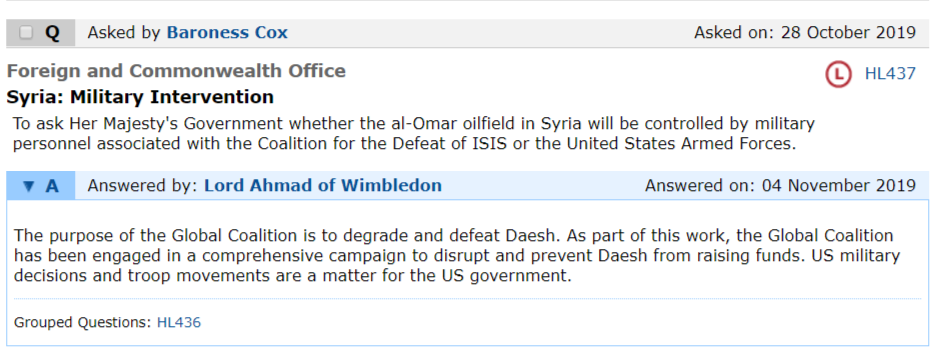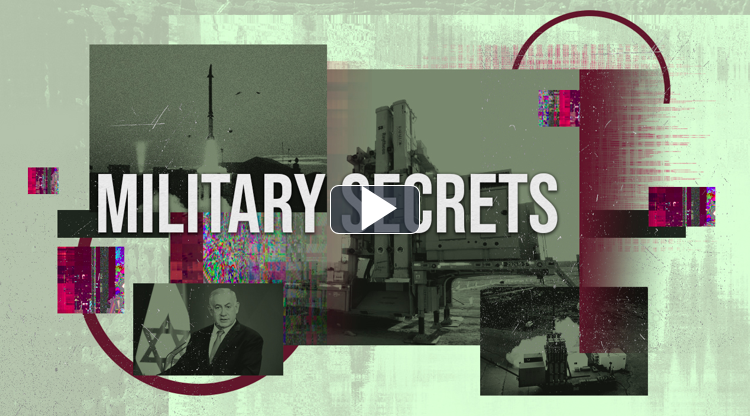It is impossible to be against the disappearance of walls that segregate people, and it is therefore impossible not to applaud the fall of the Berlin Wall in November 1989, or, for that matter, not to look forward to the fall of other walls that today, thirty years later, still stand or are being built.
But it is legitimate to inquire if the collapse of communism in Eastern Europe and the Soviet Union, inaugurated by the fall of the Berlin Wall, has been a triumph for democracy.
In doing so, it should be kept in mind that democracy has not only a political but also a social face: it is a system in which the demos, the great mass of ordinary people, not only may provide some input, e.g. via elections, but also receives some benefits, typically in the shape of social services. Let’s ask the crucial question, cui bono?, “who profited from this?” The answer may surprise you.
Beneficiaries of the so-called revolutions in Eastern Europe were certainly the landowning nobility, the former ruling class, and its close ally, the Church, Catholic in most of Eastern Europe but Orthodox in Russia, formerly also a major landowner. On account of the 1917 October Revolution in Russia and revolutionary changes introduced by the Soviets in Eastern Europe in 1944/45, the nobility and the church had lost their vast landed properties (and castles, palaces, etc.) together with their previously preponderant political power.
In the years following the fall of the Berlin Wall, however, not only the noble families of the former German and Austro-Hungarian Empires, but also, and especially, the Catholic Church, were able to recuperate in Eastern Europe their landed property that had been socialized in 1945. The result is that the Catholic Church is once again the biggest landowner in Poland, the Czech Republic, Hungary, Croatia, etc. To this landlord, the Eastern European plebeians — e.g., Polish tenant farmers and Slovenian stall-keepers on the little market square behind the Cathedral of Ljubljana — now have to pay much higher rents than in the supposedly “bad old days” before 1990. Many former aristocratic landowners, such as the dynasty of the Schwarzenbergs, are back in possession of chateaux and large domains in Eastern Europe and enjoy once again great influence and political power, just like in the supposedly “good old days” before 1914 and/or 1945.

Image on the right is from the US Embassy in Holy See
Not a word was ever said or written about these things in our mainstream media, however; to the contrary, we were persuaded to believe that Karol Józef Wojtyla, Pope John-Paul II, collaborated with the archconservative American President Ronald Reagan and the CIA against the Soviets only in order to restore democracy in Eastern Europe. That the head of the Catholic Church, an eminently undemocratic institution in which the Pope has everything to say, and millions of ordinary priests and believers nothing at all, might be an apostle of the democratic gospel, is an absurd notion.
If the Pope really wanted to go to bat for democracy, he could have started with the Catholic Church itself. That John-Paul II really wanted nothing to do with genuine democracy appears all too clearly from the fact that he condemned “liberation theology” and fought tooth and nail against the courageous champions of this theology — generally ordinary priests and nuns — who promoted democratic change in Latin America, democratic change that was much more needed there than in Eastern Europe. Indeed, in most of Latin America the population has never benefited from inexpensive housing, free education, medical care, or the many other social services that were taken for granted in communist Poland and elsewhere in Eastern Europe. Of course, in Latin America the Catholic Church had always been a large landowner, whose privileges and wealth — fruits of the bloody conquest of the land by the Spanish conquistadors — might have been erased by a genuine democratization to the advantage of peasants and other proletarians. It is undoubtedly for this reason that the Pope worked hard for change in Eastern Europe but opposed it in Latin America.
In any event, in the predominantly Catholic countries of Eastern Europe, and especially in Poland, the Catholic Church was able to recuperate much of its former wealth and influence. But does this amount to a triumph for democracy? Consider this: democracy means equal rights for all citizens, but in Poland the separation of Church and state, one of the great achievements of the French Revolution, providing equal rights to all citizens regardless of their faith, which was a reality under communism, now exists only on paper, but not in practice; Poles who do not happen to be Catholic, as well as homosexuals and feminists, cannot feel at home there. Poland has in some ways returned to the very undemocratic era before the French Revolution when, in just about every country, a specific ‘state religion’ was imposed on all citizens and there was no question of religious freedom or tolerance.
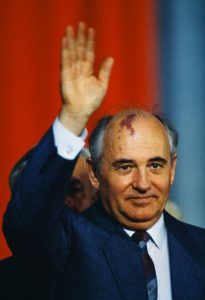 In Russia, the Orthodox Church had lost virtually all of its former wealth and influence as a result of the 1917 revolution. Conversely, it managed to recuperate a great deal of riches and influence after the likes of Gorbachev and Yeltsin dismantled the communist system, fruit of an October Revolution that had also separated church and state. In the Russian heartland of the former Soviet Union, the Orthodox Church has made a comeback almost as spectacular as the one achieved by the Catholic Church in Poland. It has repossessed virtually the entire gigantic portfolio of land and buildings it owned before 1917, and the state has generously financed the restoration of old (and the construction of new) churches at the expense of all taxpayers, Christian or not.
In Russia, the Orthodox Church had lost virtually all of its former wealth and influence as a result of the 1917 revolution. Conversely, it managed to recuperate a great deal of riches and influence after the likes of Gorbachev and Yeltsin dismantled the communist system, fruit of an October Revolution that had also separated church and state. In the Russian heartland of the former Soviet Union, the Orthodox Church has made a comeback almost as spectacular as the one achieved by the Catholic Church in Poland. It has repossessed virtually the entire gigantic portfolio of land and buildings it owned before 1917, and the state has generously financed the restoration of old (and the construction of new) churches at the expense of all taxpayers, Christian or not.
The Orthodox Church is once again big, rich, and powerful, and closely associated with the state, exactly as in the pre-revolutionary, quasi-medieval czarist era. With respect to religion, Russia, like Poland, has made a great leap backward to the Ancien Régime.
As for ordinary people, the situation is not nearly as bright. In Russia, the revolutionary changes inaugurated in 1917 had brought enormous improvements in the lives of the bulk of a formerly extremely poor and backward population — not immediately, but certainly in the long run.
By the time of the fall of the Berlin Wall,, the Soviet population had achieved a rather decent level of general prosperity, and the majority of Soviet citizens did not long for the demise of the Soviet Union.
To the contrary: in a 1991 referendum, no less than three quarters of them voted to preserve the Soviet state, and they did so for the simple reason that this was to their advantage. Conversely, the demise of the Soviet Union, prepared by Gorbachev and achieved by Yeltsin, turned out to be a catastrophe for the majority of the Soviet population.
The kind of widespread, desperate poverty that was so typical of Russia before the October Revolution was able to make a comeback there in the 1990s, that is, at the time when capitalism was restored under Yeltsin’s auspices. The latter orchestrated what may well have been the biggest swindle in world history: the privatization of the enormous collective wealth, built up between 1917 and 1990, via superhuman efforts and untold sacrifices, by the labor of millions of ordinary Soviet citizens, by what used to be called the “proletariat.” That crime benefited a “profitariat,” that is, small group of profiteers, who became super-wealthy, a kind of mafia whose bosses are known as “oligarchs.” Balzac once wrote that “a crime hides behind every great fortune”; the great crime that hides behind the fortunes of the Russian (and other Eastern European) oligarchs was the privatization of the wealth of the Soviet Union under the auspices of Yeltsin, and ordinary Soviet citizens were the victims of that crime.
It is thus not surprising that even now, a majority of Russians regrets the disappearance of the Soviet Union, and that in former East Bloc countries such as Romania and East Germany, many if not most people are nostalgic about the not-so-bad times before the fall of the Berlin Wall, as is consistently demonstrated by opinion polls. A major determinant of this sentiment is the fact that vital social services such as medical care and education, including higher education, are no longer free of charge or very inexpensive, as they used to be. Women also lost many of the considerable gains they had achieved under communism, for example, with respect to employment opportunities, economic independence, and affordable childcare.
A majority of the denizens of former Eastern-European “satellites” of the Soviet Union likewise experienced hard times after the fall of the Berlin Wall. These countries were de-industrialized as privatization caused western corporations and banks to move in and apply “shock therapy,” which involved massive layoffs of workers in the name of efficiency and competitiveness. A previously unknown curse, unemployment, appeared on the scene precisely when social services, previously taken for granted, were discarded because they do not fit into the neoliberal mould. Today, there is no future in Eastern Europe for young people, so they leave their homeland to try their luck in Germany, Britain, and elsewhere in the west. These Eastern Europeans vote against the new system “with their feet,” as the western media used to crow triumphantly whenever dissidents defected from communist countries at the time of the Cold War.
While the communist countries offered their citizens elaborate social services and full employment, in other words, a fairly high level of social democracy, there was certainly no political democracy, at least not in the conventional western sense of the term, that is, with free elections, free media, etc. In Russia and Eastern Europe, there is now admittedly much more freedom but, as a denizen of Germany’s eastern reaches has sarcastically quipped, this freedom amounts mostly to “a being free of employment, of safe streets, of free health care, of social security.”
In other words, political democracy has arrived at the cost of the liquidation of social democracy; and as this comment implies, to many if not most people, benefits such as full employment, free education, health care, etc., are more precious than the freedom, enjoyed by Americans, for example, to choose a president between the candidates of two parties, the Democrats and the Republicans, that have not without reason been described as “two right wings of one single party.” (Not surprisingly, a great percentage of Americans does not bother to vote.)
Eastern Europeans may now be freer than before the fall of the Berlin Wall, but do they now live in truly democratic political systems? Far from it. Russia never experienced the dawn of genuine political democracy; not under Yeltsin, and not under Putin. As for the former Soviet “satellites,” increasing numbers of people there are traumatized by the loss of social benefits and other services that they took for granted under communism and had not expected to lose upon the arrival of capitalism.
Persuaded by politicians and media pundits to blame their troubles on scapegoats such as refugees, they have increasingly supported extreme-right parties that advocate authoritarian, jingoist, xenophobic, racist, and sometimes openly neo-fascist or even neo-Nazi policies. All too many of the leaders of parties and even governments in the post-communist states are no champions of democracy at all, but glorify the undemocratic and sometimes openly fascist elements that ruled their countries in the 1930s and/or collaborated with the Nazis during the war and committed monstrous crimes in the process. In Ukraine, for example, the neo-Nazis now proudly trek through the streets with torch parades, swastika flags, and SS symbols. In much of Eastern Europe, democracy is not flourishing at all; it is obviously under threat.
We have seen that the nobility and above all the clergy, the former ruling classes, have done very well in Eastern Europe and, at least as far as the church is concerned, in Russia as well, thanks to the fall of communism. But the greatest beneficiaries of the changes inaugurated by the fall of the Berlin Wall have been the international elites of business, the big banks and corporations. These are generally American, West-European, or Japanese multinationals, and being a multinational means doing business in all countries and paying taxes in none. (Except in tax havens such as the Cayman Islands, where the tax rate is minimal).
After the fall of the Berlin Wall, the multinationals triumphantly entered Eastern Europe in order to sell their hamburgers, cola, weapons, and other merchandise; to take over state enterprises for a song; to grab raw materials; to hire highly qualified workers and staff, educated at state expense, at low wages; etc. (In Russia this looked possible under Yeltsin, darling of the West, but Putin subsequently blocked the West’s planned economic conquest of Russia in favour of homegrown capitalists, and for this he has never been forgiven.)
The financial and industrial elite of Western Europe and much of western world in general has managed to profit in yet another way from the fall of communism. In the immediate aftermath of the Second World War, even in Western Europe the Soviet Union was still rightly regarded as the vanquisher of Nazi Germany, and its social-economic model enjoyed an immense prestige. In this context, the Western elite hurriedly introduced political and social reforms – collectively known as the “welfare state” – to avoid more radical, even revolutionary changes for which a potential certainly existed, most obviously in countries such as France and Italy.
And during the Cold War it was deemed necessary to maintain a system of ‘welfarism’ and high employment to retain the loyalty of workers in the face of competition from the communist countries with their policies of full employment and elaborate systems of social services. But the welfare state restricted, not drastically but certainly to some extent, the possibilities for profit maximization, and “neoliberal” intellectuals and politicians condemned the scheme from the very start as a nefarious state intervention in the presumably spontaneous and beneficial operation of the “free market.” The collapse of communism in Eastern Europe, then, offered the elite a golden opportunity to dismantle the welfare state and social security schemes in general. As there was no longer a Soviet Union to compete with, the elite was free to roll back the social services associated with the welfare state all over Western Europe with impunity. In the years after 1945, writes the Belgian historian Jan Dumolyn,
the elite had made major concessions to the working population out of fear of communism, . . . in order to keep people quiet, and to counter the appeal of socialism behind the Iron Curtain. It is therefore not a coincidence that the social services began to be rolled back after the fall of the Berlin Wall in 1989. The threat was gone. It was no longer necessary to appease the working population.
In Western Europe and elsewhere in the Western world, the elite is still very much focused on this task, clearly in the hope that soon nothing at all will be left of the welfare state. The fall of the Berlin Wall made it possible that we are now witnessing a return to the unbridled, ruthless capitalism of the nineteenth century – a catastrophe for ordinary people, for the demos, and therefore a major setback for the cause of democracy.
The losers in the drama of the collapse of communism in the Soviet Union and Eastern Europe thus also include workers and employees in Western countries, that is, the majority of the population, which erroneously considers itself to be “middle-class”: their relatively high wages, favourable working conditions, and social services, introduced after 1945, were proclaimed to be “unaffordable.” The wage-earners were told to settle for less, but even when they do agree to have their wages lowered and their benefits “clawed back” in the framework of “austerity” measures, they often see their jobs disappear in the direction of the low-wage countries of Eastern Europe and the even lower-wage Third World. After the fall of the Berlin Wall, the big West German corporations, which had collaborated very profitably with the Nazis between 1933 and 1945, were allowed to plunder East Germany economically.
On the other hand, the West German workers have seen their wages — lowered by the Nazis but increased immediately after 1945 — decline rapidly, as job opportunities migrated to areas further east and keen competition for the remaining jobs has been arriving in the form of migrants from Eastern Europe as well as refugees from Syria, Afghanistan, etc. These newcomers are blamed by many journalists and politicians for all the problems; this serves to divert attention from the real causes of the problems and simultaneously provides grist for the mill of all sorts of neo-fascist and other extreme-right political movements.
The fall of communism turned out to be very advantageous for a minority but highly disadvantageous for the majority of the population on both sides of the former Berlin Wall. It also had extremely nasty consequences for millions of people in the Third World. In the years after 1945, the cause of democracy achieved significant progress there, because the denizens of countless colonies could realize their dream of independence.
That was possible thanks to the support of the anti-imperialist Soviet Union and despite stubborn resistance put up by the western powers that happened to be the colonial masters. The latter inflicted murderous wars on the freedom fighters. France and the US, for example, tried (in vain) to smash revolutionary movements in Algeria and Vietnam, massacring millions of people in the process. In many colonies that gained their independence, the western powers made use of assassination (e.g. Lumumba), bribery, embargoes, destabilization, coups d’état, etc. They also engineered fake revolutions (“colour revolutions”) to ensure that socialist experiments were avoided or caused to fail and that regimes came to power that served the interests of the former colonial masters.
But it was not easy to pursue neo-colonialist projects as long as the Soviet Union existed, because Moscow provided considerable support, first to revolutionary forces that fought for independence in the colonies and afterwards to independent former colonies, especially — but not exclusively — when they opted for a Soviet model of development. After the fall of the wall and the implosion of the Soviet Union, however, the western powers, and above all their leader, the US, found it much easier to impose their will on the ex-colonies.
This not only meant that the former colonies were no longer permitted to imitate the Soviet example and follow the socialist path to development, which quite a few of them had originally intended to do: henceforth it was also verbotento steer an independent economic course, for example by closing their doors to western export products and investment capital and/or use their own raw materials such as petroleum for the benefit of their own people instead of the profit of American and other foreign investors. The latter was/is the great sin committed by the likes of Saddam Hussein, Bashar al-Assad, Nicolás Maduro, and, just recently, Evo Morales. Neo-colonial objectives could now be achieved via bombings, invasion, and other brutal forms of open warfare, as happened in Iraq, Afghanistan, Libya, and Syria, or economic warfare, for instance against Cuba and Venezuela.
These wars have had an extremely undemocratic character, as they have cost the lives of millions, mostly poor people, including countless women and children. And the regimes installed by the victors have all turned out to be hopelessly undemocratic, unpopular, corrupt, and sometimes incapable of governing a country.
While these wars have been a catastrophe for millions, they have been wonderful for the (mostly American) western producers of sophisticated and super-expensive weaponry. The high costs of these wars are socialized, they are the responsibility of the state and therefore of the ordinary citizens who are saddled with an increasingly important share of the taxes, while the profits are privatized, that is, end up in the wallets of shareholders of (mostly multinational) corporations and banks whose taxation rate has consistently dwindled to ridiculously low levels. The neocolonial wars, made possible, or at least facilitated, by the fall of the Berlin Wall and the collapse of the Soviet Union, thus not only ruin the lives of millions of denizens of poor Third World countries, but also contribute to make the few rich even richer, and the poor, even poorer, in the western heartland.
These wars consolidate not only the riches, but also the power, of the rich and powerful: they constitute a pretext for limiting the freedom of ordinary people in the name of national security and patriotism. President George W. Bush achieved that with his repressive Patriot Act; and the internet and especially the social media are used increasingly spy on (and thus intimidate) the oi polloi. Thanks to the fall of the Berlin wall, then, the “one percent” is now richer and more powerful than ever before, and the “99 percent” are poorer and more powerless than ever before.
If you belong to the “one percent”, go ahead and celebrate the fall of the Berlin Wall, thirty years ago. But please do not ask the rest of us to celebrate with you.
*
Note to readers: please click the share buttons above. Forward this article to your email lists. Crosspost on your blog site, internet forums. etc.
Jacques R. Pauwels is the author of The Great Class War: 1914-1918. He is a Research Associate of the Centre for Research on Globalization (CRG).












